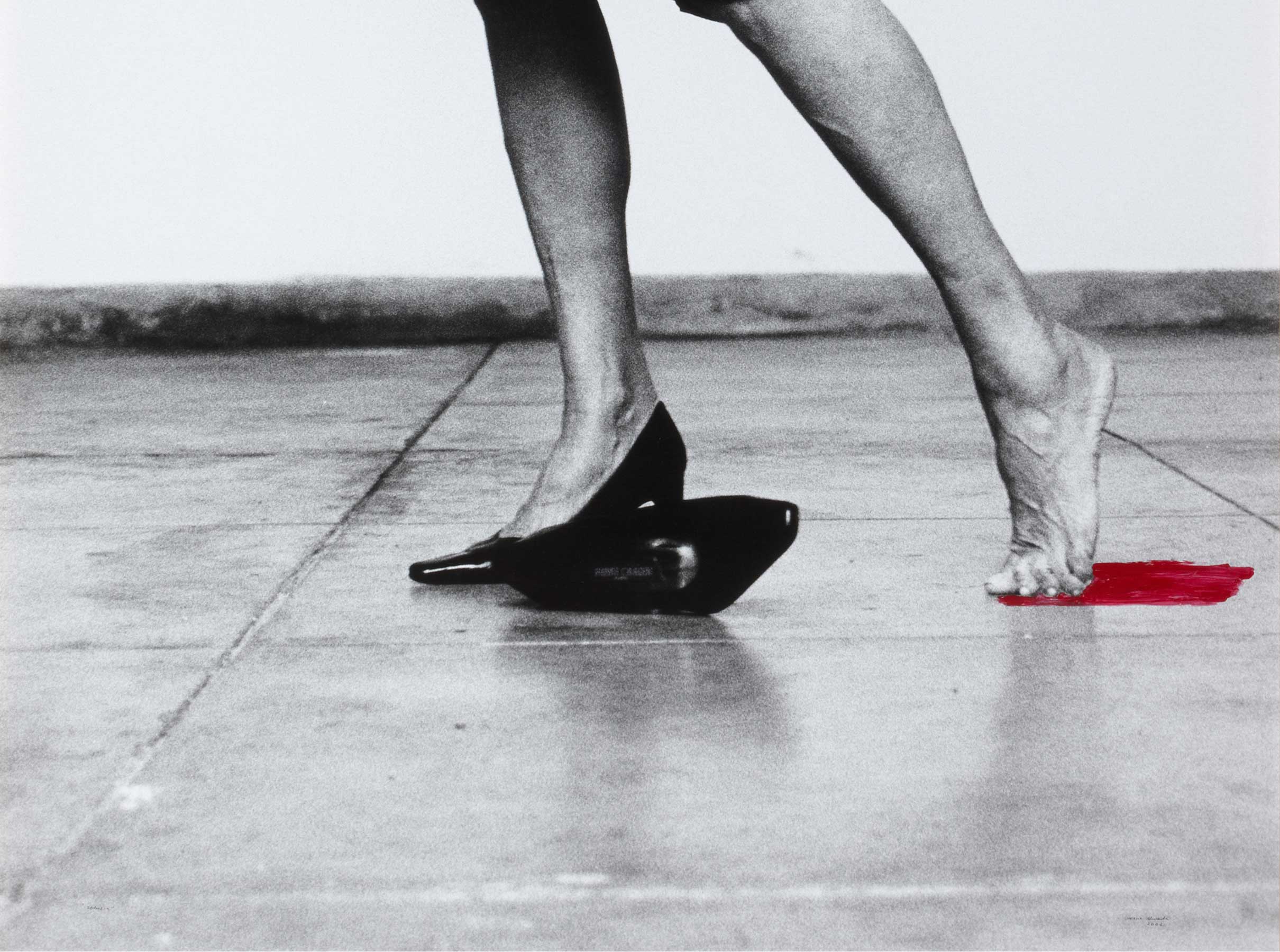Dos figuras femeninas [Two female figures]
- c. 1500
- Tempera on board
- 65,5 x 29 cm
- Cat. P_282
- Acquired in 1981
The altarpiece in the chancel of the Church of Santa María in Frechilla is known to have been dismantled in the mid-thirteenth century, when it was replaced by the Baroque construction seen today. According to Silva Maroto (2003), by 1947 several panels of the original altarpiece had been moved to the building that now houses the Diocesan Museum of Palencia. These included depictions of Salvator Mundi, King Ezra and The Crucifixion of Our Lord – which are still held in the museum – and The Entry into Jerusalem and The Road to Calvary, which are not.
The panel in the Banco de España Collection appears to have been cut from a larger image of the Presentation of the Blessed Virgin Mary in the Temple, similar to that documented in the altarpiece dedicated to the Virgin Mary in the Church of Santa Eugenia in Becerril de Campos (Palencia province). In 2024, Palencia Museum acquired the missing upper section, depicting a bishop with a richly ornamented cape and mitre beneath a pointed arch.
In 2003, Matthias Weniger published a photograph of the piece from the church in Frechilla, taken around 1943 in the Episcopal Palace of Palencia, clearly showing the original composition. The photograph is now in the Spanish Institute of Cultural Heritage's Moreno Archive (Ref. 12107-B). As described by Pérez Sánchez, in 1957 the two panels still formed a single piece, catalogued as No. 51 in an exhibition entitled ‘Juste de Gand. Berruguete et la Cour d'Urbino’ (Justus Van Ghent, Berruguete and the Court of Urbino).
Reading List:
Sancho Campo, Angel (1999): Guía del Museo Diocesano de Palencia. Palencia, 1999
Silva Maroto, Pilar (1998) Pedro Berruguete. Estudios de Arte, No. 10. Junta de Castilla y León.
Silva Maroto, Pilar (2003): Pedro Berruguete. El primer pintor renacentista de la Corona de Castilla. Exhibition catalogue. Junta de Castilla y León.
Weniger, Mathias (2004): 'Pedro Berruguete y Juan de Borgoña' in Actas del Simposium Internacional “Pedro Berruguete y su entorno”, Palencia 2003, pp. 127-144
This small panel is undoubtedly a highly restored fragment of a larger work, probably depicting a scene from the life of the Virgin Mary. There are parallels in the general appearance and the arrangement of the figures with two of Berruguete's other pieces, The Virgin Mary's Suitors from the altarpiece of the church of Santa Eulalia in Paredes de Nava and Presentation of the Virgin at the Temple from the Church of Santa María in Becerril de Campos. Both works feature female figures that are very similar in type, model and pose to the ones in this panel. The lower part of the work is the result of a skilful modern restoration, intended to complete the figures. In general, the piece shows a number of fifteenth-century innovations that Berruguete imported from Italy, such as the perspective, the design of the space, the anatomical treatment of the figures and the delicate language of gestures employed. Nonetheless, we can be reasonably sure that the fragment was not directly painted by the master himself but by artists from a workshop from which he commissioned many works in his latter years.
This is probably the fragment from a Presentation of the Virgin at the Temple (Exhibit No. 51) shown at a 1957 exhibition in Ghent entitled 'Juste de Grand, Berruguete et la Cour d'Urbino' [‘Justus van Gent, Berruguete and the Court of Urbino’]. It belonged to the Gudiol Ricart Collection in Barcelona and is listed in the documentation as measuring 63 x 24 cm. This would seem to suggest that the restoration, which entailed extending the height and width of the work by several centimetres, was carried out for essentially aesthetic purposes.
Comment updated by Carlos Martín.
Other works by Pedro Berruguete

![Dos figuras femeninas [Two female figures]](/f/webca/INF/assets/img/fff.png)